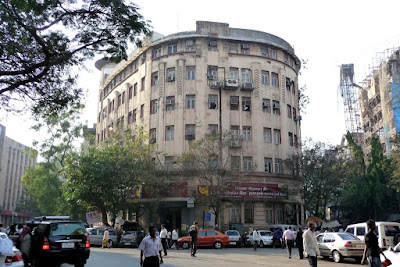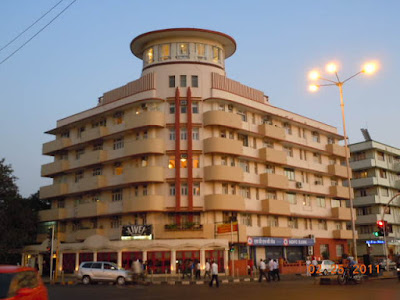MUMBAI'S ART DECO MASTERPIECES
Art deco has become such an integral part of the Mumbai landscape, it sometimes seems like it was born in the city. Did you know that Mumbai has the second largest number of surviving art deco buildings in the world, after Miami?
Art deco’s came to Mumbai at a time when the city was flourishing and construction activity and reclamation was at its peak. In the 1930s, as land reclamation and suburbanization schemes in the Dadar-Matunga area gave Mumbai ample room to grow, the city’s first generation of architects trained in the West were returning home. On these plots, they created a variety of art deco masterpieces, both public and private, some grandiose, others rather more functional.
In true Indian style, Art Deco in Bombay evolved into a unique style incorporating elements of Hindu architecture. Deco details touched every architectural aspect - lamps, flooring, wood panelling, mouldings, cornices, verandahs, etched glass etc . This style was called "Bombay Deco"
In Mumbai architects used different materials to express their design, for instance many buildings were constructed entirely out of RCC but had a cladding facade of Malad stone.
Like most mature styles, Art Deco too lent itself to buildings as diverse as the charming residence of Sans Soucci on Malabar Hill to the imposing Reserve Bank building on Mint road.
Post independence the Art deco style gradually dwindled as architects shifted to styles that were more modern and functional and devoid of any ornamentation.
Some of the best examples of Bombay's art deco can be observed along the western side of the Oval Maidan in the Churchgate area. The buildings here, built in the 1930s, have names like Palm Court and Greenfields and Court View. Don’t miss the panels of tropical birds at Swastik Court, the clouds, sun and waves on the metal grilles at Empress Court, the Greek frozen fountain motif at the entrance of Court View.
UNDERSTANDING ART DECO
The term Art Deco refers to an architectural style that was popular in the 1920's and 30s, it was considered ultramodern at the height of its popularity. The second world war saw the decline of this style as it seemed to be too gaudy and ostentatious for wartime austerity.
The Chrysler building and the Empire State building are perhaps the most famous art deco gems.
 |
| CHRYSLER BUILDING |
 |
EMPIRE STATE BUILDING
|
KEY ELEMENTS
 |
| COURT VIEW STAIRCASE |
 |
| BUILDING SIGNAGE |
 |
| ART DECO GATE |
 |
| LIBERTY CINEMA INTERIOR |
- 1. Flat roofs.
- 2. Smooth walls. The walls of art deco homes are often made of smooth stucco and have rounded corners.
- 3. Bold exterior decorations. Buildings in the style were often decorated with zigzags, swans, lilies and sunrise motifs.
- 4. Experimentation with interior materials. Art deco designers used "new" materials such as glass block, neon, chrome, mirrors and opaque glass panels, inlaid wood
ART DECO NEIGHBORHOODS
1. FORT
 |
| CURIMJI HOUSE |
 |
| UNITED INDIA BUILDING ON PM ROAD |
 |
| INDIAN MURAL ON THE WALL OF WESTERN INDIA HOUSE |
 |
| ROUNDED BALCONIES VATCHA AGIARY |
 |
| ELEPHANT MOTIFS ON LAKSHMI INSURANCE BUILDING |
2. MARINE DRIVE
 |
| TARAPOREWALA AQUARIUM |
 |
| SOONA MAHAL |
3. MARINE LINES
 |
| LIBERTY CINEMA |
4. OVAL AREA AND CHURCHGATE
 |
| INDIAN MERCHANTS CHAMBER |
 |
| ASTORIA HOTEL CHURCHGATE |
 |
| INDUSTRIAL ASSURANCE BUILDING CHURCHGATE |
 |
| COURT VIEW 1938 |
 |
| SHIV SHANTI BHAVAN WITH ITS GLASS PANEL AND SUNBURST MOTIF |
 |
EROS CINEMA WITH ITS CYLINDRICAL TOWER
|
 |
RAJJAB MAHAL
|
5.COLABA AND BALLARD ESTATE
 |
| SHELLEYS HOTEL COLABA |
 |
| DHANRAJ MAHAL |
 |
| HORNIMAN CIRCLE |
 |
| REGAL CINEMA |
 |
| NEW INDIA ASSURANCE BUILDING, BALLARD ESTATE |
 |
| A CLOSER VIEW |































No comments:
Post a Comment